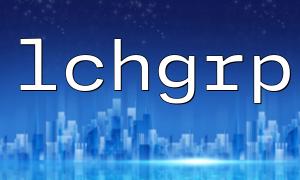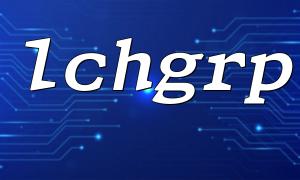In PHP programming, we often need to perform various file operations, such as determining file types and modifying file attributes. For handling symbolic links, PHP provides the lchgrp() function and the is_link() function. By combining these two functions, we can identify symbolic links and change their group ownership. The following sections will explain in detail how to use these functions to work with symbolic links and modify their group ownership.
The lchgrp() function is used to change the group ownership of a file or directory. Its syntax is as follows:
<span><span><span class="hljs-title function_ invoke__">lchgrp</span></span><span>(</span><span><span class="hljs-keyword">string</span></span><span> </span><span><span class="hljs-variable">$filename</span></span><span>, </span><span><span class="hljs-keyword">mixed</span></span><span> </span><span><span class="hljs-variable">$group</span></span><span>): </span><span><span class="hljs-keyword">bool</span></span><span>
</span></span>$filename: Specifies the path to the file or directory whose group ownership is to be changed.
$group: The target group to assign. This can be either a group name (string) or a group ID.
The key difference between lchgrp() and chgrp() is that lchgrp() does not follow symbolic links. It only applies to the symbolic link itself, whereas chgrp() follows the link and modifies the group ownership of the target file.
The is_link() function checks whether a specified path is a symbolic link. The syntax is as follows:
<span><span><span class="hljs-title function_ invoke__">is_link</span></span><span>(</span><span><span class="hljs-keyword">string</span></span><span> </span><span><span class="hljs-variable">$filename</span></span><span>): </span><span><span class="hljs-keyword">bool</span></span><span>
</span></span>$filename: The path of the file to be checked.
Return value: Returns true if the path is a symbolic link; otherwise, it returns false.
By combining is_link() and lchgrp(), we can determine whether a file is a symbolic link and, if so, change its group ownership. Below are the detailed steps and example code.
First, use the is_link() function to check if the specified file is a symbolic link. If it is, it returns true; otherwise, it returns false.
If confirmed to be a symbolic link, the lchgrp() function can be used to change its group ownership. lchgrp() modifies the group of the symbolic link itself without affecting the target file it points to.
Here is a PHP example that uses both is_link() and lchgrp() to detect symbolic links and change their group ownership.
<span><span><span class="hljs-meta"><?php</span></span><span>
</span><span><span class="hljs-comment">// Set file path</span></span><span>
</span><span><span class="hljs-variable">$file</span></span><span> = </span><span><span class="hljs-string">'/path/to/symbolic/link'</span></span><span>;
<p></span>// Set target group<br>
$group = 'newgroup';</p>
<p>// Check if file is a symbolic link<br>
if (is_link($file)) {<br>
echo "This is a symbolic link, modifying group ownership...\n";</p>
</span><span><span class="hljs-keyword">if</span></span><span> (</span><span><span class="hljs-title function_ invoke__">lchgrp</span></span><span>(</span><span><span class="hljs-variable">$file</span></span><span>, </span><span><span class="hljs-variable">$group</span></span><span>)) {
</span><span><span class="hljs-keyword">echo</span></span><span> </span><span><span class="hljs-string">"Group ownership successfully changed to: <span class="hljs-subst">$group</span></span></span><span>\n";
} </span><span><span class="hljs-keyword">else</span></span><span> {
</span><span><span class="hljs-keyword">echo</span></span><span> </span><span><span class="hljs-string">"Failed to change group ownership.\n"</span></span><span>;
}
} else {
echo "This file is not a symbolic link.\n";
}
?>
Set File Path: Define the file path you want to check. Ensure the path points to a symbolic link.
Check if It’s a Symbolic Link: Use is_link() to verify whether the file is a symbolic link. If true, proceed with the next steps.
Change Group Ownership: Use lchgrp() to modify the group ownership of the symbolic link itself. It does not affect the target file the link points to.
Error Handling: If lchgrp() fails, an error message will be displayed.
By combining the is_link() and lchgrp() functions, PHP offers a straightforward way to detect symbolic links and modify their group ownership. The is_link() function accurately identifies symbolic links, while lchgrp() directly updates the link’s group ownership. This technique is highly practical for developers managing file permissions and organizing file systems.

